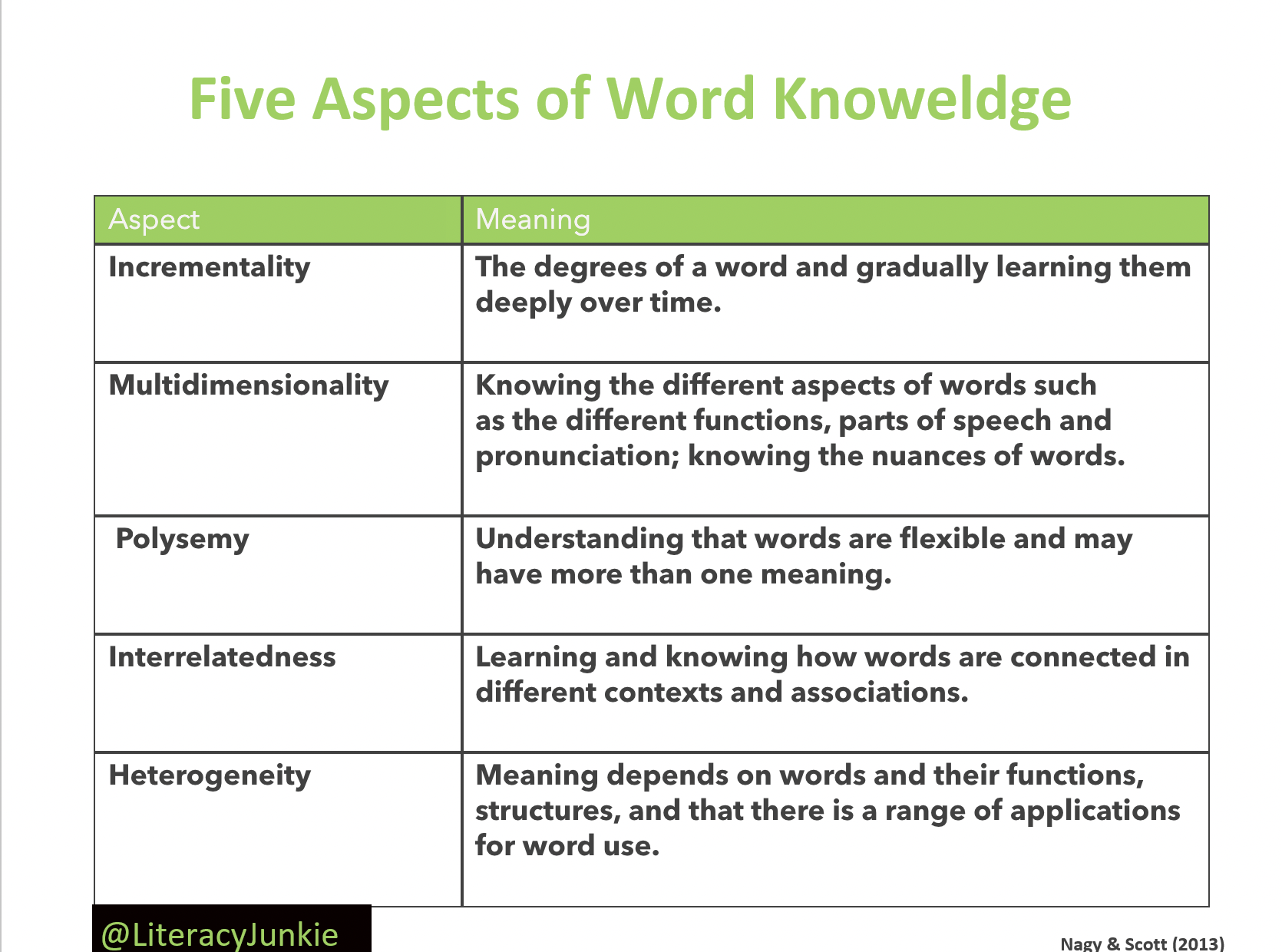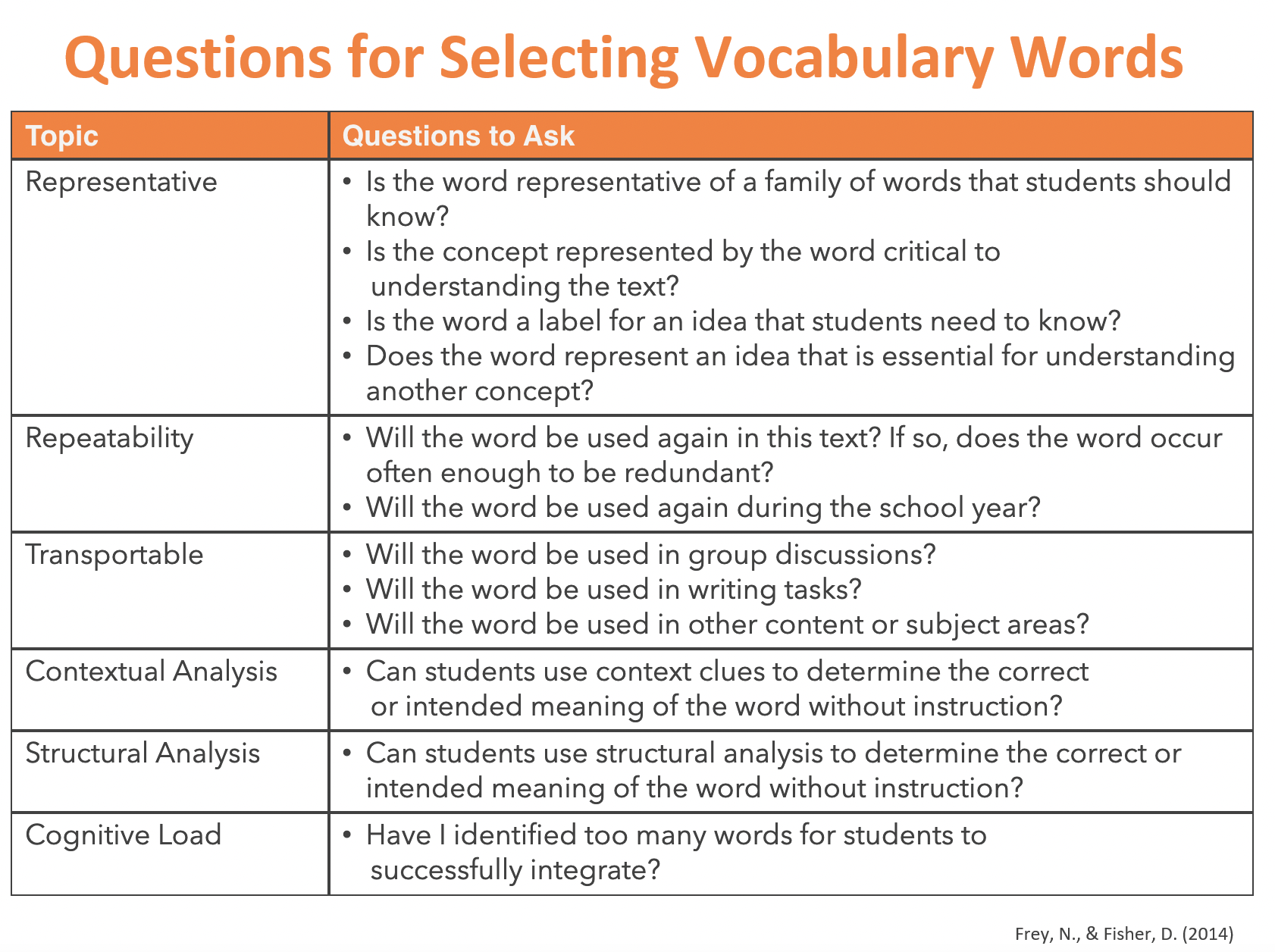Own the New Word
“The simple truth is that when it comes to learning vocabulary, nothing beats exposure and use—in every possible learning modality. ”
My husband and I were recently watching "Unorthodox" on Netflix, and in one scene, the narrator said, “She was a pious bride.” Our responses were both, “Ooh; they don’t like her at all.” Both of us had negative associations with the word pious but, come to find out, and we didn’t really know what it meant. So, I look it up on Merriam-Webster.com, and the first definition has an “a) marked by or showing reverence for deity and devotion to divine worship” and b.marked by conspicuous religiosity. But there are five other definitions as well. I let you look those up but on the same religious, worthy, and hypocritical terms. Oh, okay, that makes more sense; our associations had more of the word's negative connotations. What’s was more interesting to me was when I scrolled further, Merriam’s stated, “Pious has a bit of an image problem.” Now we’re talking. I love that they gave the word human traits. We don’t think of words having an image problem. Pious has both positive and negative connotations in literature since its beginning dating back to the 15th century. I own pious. I don’t think I will forget it, since that I discussed it with my husband, read about thought about it myself, and now I’m writing about it. That’s what kids need lots of exposure to new words through conversations around words, and writing, drawing, or creating videos about words.
I have always loved talking to teachers about vocabulary because I’ve never met a kid who didn’t love learning and using new words. Children are proud when they use those newly learned big words. Also, it’s easier to add to a packed instructional day. And notably, a substantial vocabulary impacts reading. But teachers have to support their students in developing their word growth. In my previous post on vocabulary development, Developing A Love of Words blog post found here, you can find more information on how to cultivate word learning in the classroom and specific strategies to develop word consciousness. Remember, 5-7 words is ideal for students in the primary grades.
Students need an abundance of exposure to solidify their understanding of words. Teachers need to allow time to process the information through frequent opportunities to hear the meaning of words, expose new words in multiple contexts, and opportunities for active involvement. It’s the active involvement that supports students in developing a deeper understanding of the word and how it is used flexibly.
Words as a Tool for Meaning
Once you’ve provided student-friendly definitions that use kid-friendly language with clear and specific connections, then have thought-provoking, playful and interactive, and scaffolded conversations around words. Furthermore, these descriptive explanations enable students to understand the concepts more easily. Let’s think back to Vygotsky’s language as the most prominent tool we have to develop cognitive thought and language acquisition (Vygotsky, 1978).
What does it mean to know a word?
Teachers and students need to understand the complexity of words and the intricacy of word learning. Nagy and Scott’s (2013) Five Aspects of Word Knowledge help build depth in a vocabulary framework and an understanding of implicit and explicit word knowledge.
How to determine
which words to teach.
Use these questions as a guide to determine which words to use for instruction.
Student-friendly definitions can be created together by having students locate the word in the text, read the word in the sentence, and then discuss as a class how to determine its meaning and write a definition. If you have time, this is great; as the teacher, you can guide your students in learning the correct meaning. It also supports oral language development as your students are discussing words and how they work. However, if there is limited time, then you can create student-friendly definitions beforehand.
Ownership of New Words
Integrate scaffolded conversations around words after your scholars have been introduced to clear student-friendly definitions. This type of dialogue helps students own the new words. They hear how words are flexible and nuanced, and they dig deeper into the meaning of words by hearing how others use words. Digging deeper into words is vital for all students but especially important for English language learners or at-risk students. So they start making associations.
Beck, McKeown, and Kucan, (2002) have excellent conversation ideas, so students are actively involved every day with words. Students explain their reasoning and processing information in a new way or add new associations, not merely synonyms. Additionally, these conversations support oral language development too. Win-win!
Side note: for English language learners word searches, and fill-in-the-blank activities are good because they look up definitions twice in English and their native language (Young and Davey, 2014). But for this blog, the focus is on intentional word-focused scaffolded conversations for all students.
One older author I loved in the classroom for his use of language in books is Bill Peet. In his book, Farewell to Shady Glade, the words I chose to teach were: ominous, looming, befuddled, content and anxious to teach. I created student-friendly definitions. Then students were actively involved in focused word conversations.
For example:
Describe a situation involving a target word(s) from a text:
Tell me about something you might be anxious about?
Describe the most ominous event you can think of.
Tell me a time when you felt content, befuddled, anxious? Why?
When might you say that a person was befuddled?
When might you describe someone as being content?
Word Associations
Which word goes with a feeling of confusion? Why? (content; befuddled; pleaded)
What words come to mind when you think of the word looming? Why?
What words come to mind when you think of the word befuddled? Why?
Vocabulary Outside the Classroom You could even have students bring these words home and interview family members about these words. Or interview other students on campus. See below for a PDF of the interview doc.
These conversations can be held on Zoom asynchronously whole group or small group breakout sessions if students have spent time already in discussions and understand how to collaborate. Flipgrid is another excellent platform to share and respond to questions. Students can conduct video interviews of family members or showcase the interview format. Also, an LMS discussion page is a great way to encourage writing about the words as well.
Intentional dialogue or purposeful talk around new words demonstrates that words are valued, exciting and celebrated. Ensure that it is deliberate and systematic, so students make more word associations and see the flexibility of words, which is vital for understanding and ownership of new words. In 1917, Thorndike coined the phrase “a cooperation of many forces” (p. 232). We need to capitalize on those cooperative forces for vocabulary instruction in listening, speaking reading, writing and viewing opportunities for all students.
References for further Reading
Beck, I. L., MCKeowm, M.G., & Kucan, L. (2002). Bringing words to life: Robust vocabulary instruction. New York. NY. Guilford Press.
Fisher D., & Frey N. (2014). Content Area Vocabulary Learning. Reading Teacher, 67(8), 594-599. doi:10.1002/trtr.1258
Nagy, W. E., & Scott, J. A. (2013). Vocabulary processes. In D.E. Alvermann, N. J. Unrau, & R. B. Ruddell, (Eds.). Theoretical models and processes of reading, Sixth Editon. (pp. 458-475). Newark, DE: International Reading Association. http://public.eblib.com/choice/publicfullrecord.aspx?p=3014982
Young-Davy, B. (2014). Explicit vocabulary instruction. ORTESOL Journal, 31, 26-32.
Vygotsky, L. S. (1978). Mind in society: The development of higher psychological processes. (M. Cole, V. John-Steiner, S. Scribner, & E. Souberman, Eds.). Cambridge, MA: Harvard University Press



